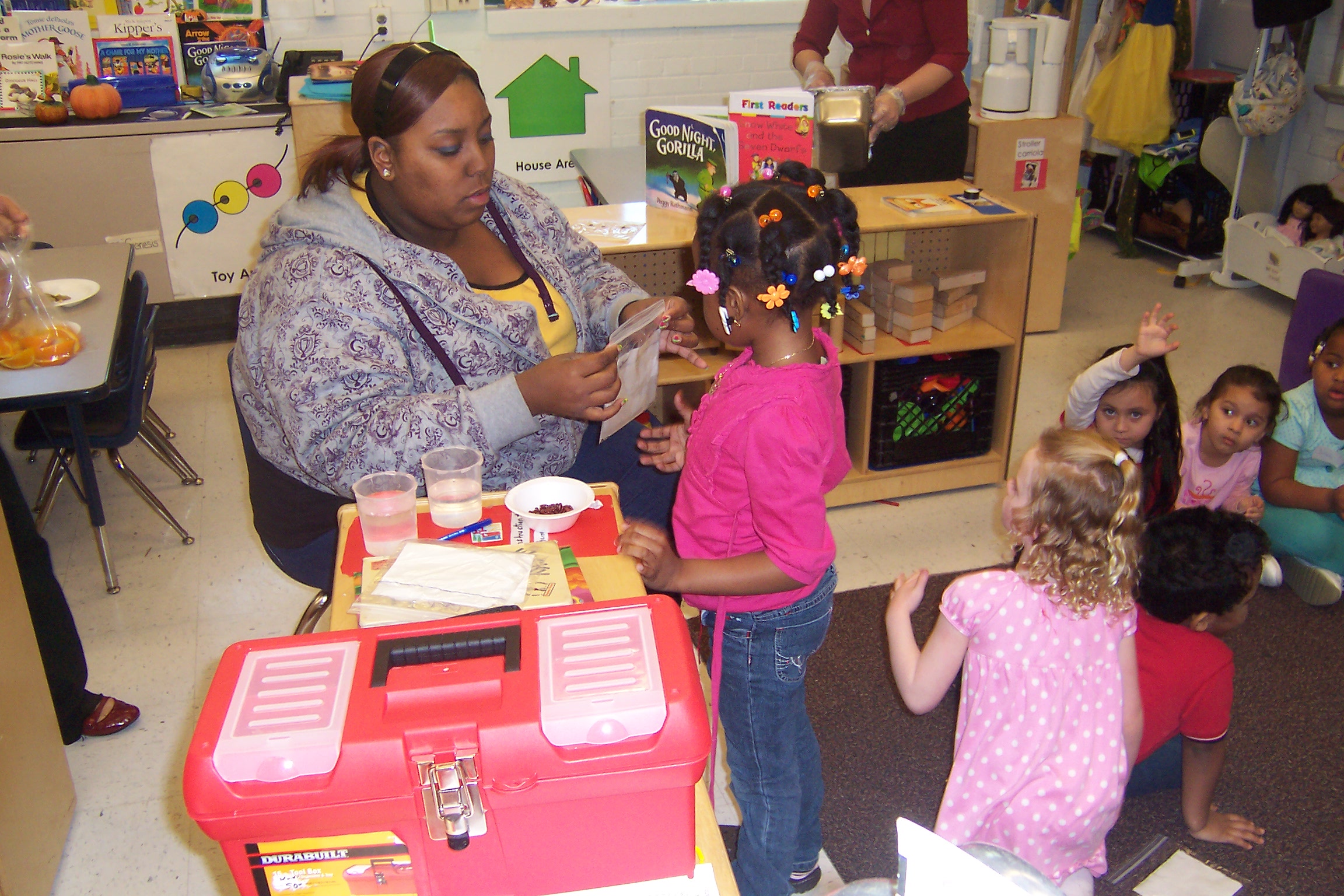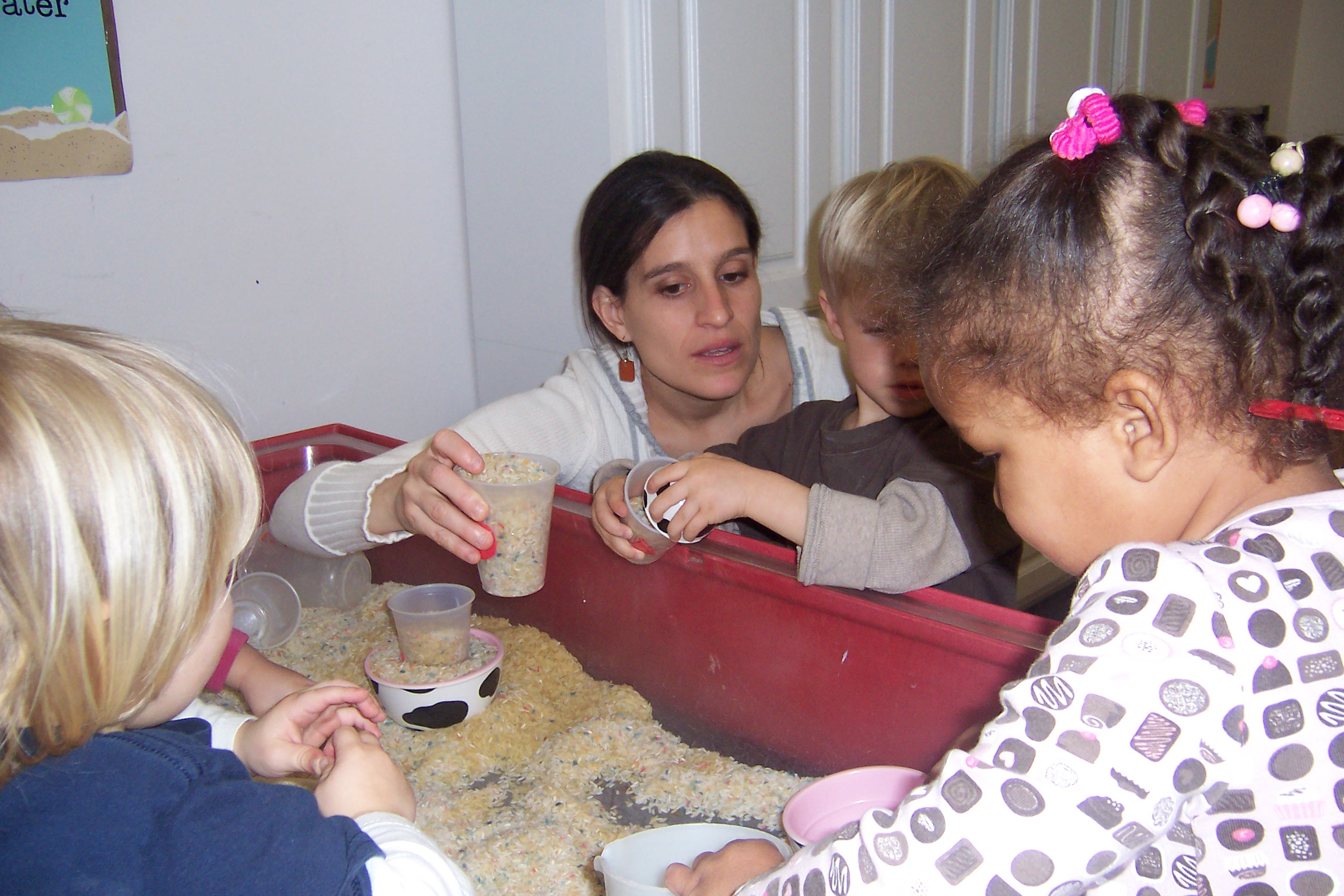Beginning the year with a plan to support science talk
By Peggy Ashbrook
Posted on 2012-07-05
 Calling on experienced teachers—what do you advise new teachers to do to establish routines that support discussion, especially discussion where children share their ideas and evidence for those ideas? Discussion can happen in small groups, with an individual or at a circle time.
Calling on experienced teachers—what do you advise new teachers to do to establish routines that support discussion, especially discussion where children share their ideas and evidence for those ideas? Discussion can happen in small groups, with an individual or at a circle time.
We can discard the hope for an ideal circle time. I try to have realistic and age-appropriate expectations for reflection and thinking about what the experiences mean during a circle time. It helps if I have a modest goal of having some-to-many, but not all, of the children and adults listen attentively, think deeply about the discussion and reply respectfully, at least part of the time. Over time children can increase their attention span and are able to listen to each other.
Editors of Developmentally Appropriate Practice in Early Childhood Programs Serving Children from Birth through Age 8, Carol Copple and Sue Bredekamp, with Janet Gonzalez-Mena, discuss their work and say,
“Developmentally appropriate practice (DAP) means teaching young children in ways that
- Meet children where they are, as individuals and as a group
- Support each child in attaining challenging and achievable goals that contribute to his or her ongoing development and learning
There’s a little more to it than that, but that’s the main idea.”
 In the Question and Answer session online they said this about introducing two and a half-year-olds to a circle time,
In the Question and Answer session online they said this about introducing two and a half-year-olds to a circle time,
“For me the whole idea is to get them used to the fact that being with other children and an adult is interesting and worthwhile. They don’t have to be all together in a large group.”
(For a description of a developmentally inappropriate circle time, read the first page of the Viewpoint column from the National Association for the Education of Young Children (NAEYC) journal, Young Children on the Web July 2005, Whatever Happened to Developmentally Appropriate Practice in Early Literacy? By Susan B. Neuman and Kathleen Roskos.)
The NAEYC position statement on Developmentally Appropriate Practice is available in English and Spanish at http://www.naeyc.org/positionstatements/dap
I once video-taped a kindergarten class while I thought they were listening attentively to the teacher reading a book aloud. Upon reviewing the video, I was surprised to see that most of the children had been bobbing and weaving as they fidgeted while still intently focused on the teacher—something I hadn’t noticed while filming. They were able to answer questions and participate in the discussion about the book after—so being still is not the same as paying attention.
NAEYC’s 10 Effective DAP Teaching Strategies is at http://www.naeyc.org/dap/10-effective-dap-teaching-strategies These strategies work well during a science talk time!
In the Science & Children column “Talk Strategies: How to promote oral language development through science,” (November 2011, pgs 62-66) authors Lauren M. Shea and Therese B. Shanahan include “Report to a Partner,” “Three-way Interview,” and “Think-Pair-Share” among the strategies they use to include talk into science lessons–especially helpful in developing the vocabulary of English learners.
Other useful articles about science talk in Science & Children are:
“Connecting Science and Literacy Through Talk: Third graders sit in a literacy circle and talk simple circuits in science class” by Jeff Winokur, Karen Worth, and Martha Heller-Winokur (November 2009, pgs 46-49). This article describes a third grade class.
“Science Conversations for Young Learners: Tips on guiding kindergarteners to participate in large-group discussions in science” by Julie Sander and Sara Nelson (February 2009, pgs 43-45). The authors describe how science talk developed in their classroom as they tried strategies and made changes to meet their goals.
The NSTA Learning Center forum, “Home > Elementary Science > What Does Inquiry Science Look like in Elementary Classrooms”, has an in-depth discussion about science talk going on—join in!
The culture of “science talk” develops over the school year. Consistent practice and teacher modeling teaches the expectation of sharing observations, saying what we think about them, and why we think that. Have the children help the write and post the rules for participating at Circle Time. Include a “Science Talk” circle time on the Daily Schedule on days when the class is ready to share their observations and discuss them. By engaging preschoolers in small groups or short circle times to talk about their observations and what they mean, we are helping children develop their ability to discuss their scientific ideas.
Share your strategies and structures for productive talk in any early childhood classroom.
Peggy
Disclaimer: The views expressed in this blog post are those of the author(s) and do not necessarily reflect the official position of the National Science Teaching Association (NSTA).

